
The foreboding backdrops of Capcom NES games
Sep 29, 2014 // GregaMan
The Nintendo Entertainment System, guys, amirite? At age thirty I still don’t know what a “bit” is, but apparently you only need eight of them to create an infinite number of infinitely deep, dark hellscapes; vivid worlds cloaked in thick, oppressive atmospheres that creep and sprawl through your imagination like spiderwebs through a horrid countryside tunnel. Sure: the NES library in its seemingly endless vastness had its light-hearted selections. We all remember the Noid. But it had a particular knack for generating dark worlds filled with foreboding. Maybe that creeping dread wasn’t purely a product of the physical worlds depicted in the games themselves. Maybe it was because games were so hard back then. Maybe it’s because most backgrounds consisted of endlessly repeating patterns and there’s something inherently, terrifyingly, mechanically alien about that. Maybe it’s because the edge of the screen worked as though it were the merciless edge of existence—events and encounters that occurred elsewhere mere moments ago were immediately forgotten, nullified. Maybe it’s because the NES’s color palette had, like Chicago before it, so damn many blues. Maybe it’s just because I was an overimaginative kid (though that, I feel, is an oxymoron). But I have faith that I’m not the only NES player who felt and still feels this way. Just look at these foreboding NES backdrops and setpieces. There is perhaps no Capcom NES game more synonymous with “hellscape” than Street Fighter 2010, a game about warping to alien planets in an alien galaxy and doing lots of backflips. I know, I’ve been talking about this game a lot lately. I do not apologize. On quite the contrary: You’re welcome. At one point in the game, you warp into the cold, soulless lair of “Electric Tommy,” an equally cold and soulless robot-like entity equipped with an electric coil. The lair is a nonsensical maze of blinking bulbs and machinery of unimaginable function. The background sprawls beyond the traversable confines of the level, and shadowy doorways suggest this is just part of an impossibly expansive, impossibly expensive complex. It boggles the mind to ponder what this place is even for. Another stage of the game places you in a dingy, seedy dive bar confined to a single screen. Unseemly hooded creatures with beady eyes and other drunkards watch on excitedly as you battle to the death with an armored gorilla man. I wonder if that pinball machine ever really gets any play. The shoot-‘em-up Legendary Wingsswitched intermittently between overhead and side views. The gateway signifying this switch was none other the gaping robo-demon pictured above. You and your wings would have to be the stuff of legends to venture into the mouth of this thing, not just once, but once per stage. Just look at that impossibly black mouth. What lurks within, no one knows. ↑ Turns out it’s filled with an endless wall of guts and faces. One of the final encounters of Bionic Commandotreats you to what is my favorite screen in all of NES gaming. In games built out of repeating tiles, the occurrence of a unique, singular image meant you were officially experiencing Something Important. The nefarious “Master-D” awakens from his long sleep within a massive, fluid-filled chamber. The also-nefarious Generalissimo Killt stands indignantly before you. A wall of incomprehensible dots and lines extends for unknown lengths in the background. Are those lights? Pipes? Wires? Secret morse code? (Actually, I looked this up; if it is morse code, it says “AAAAAAA,” suggesting that yes, it is morse code.) All of these elements are unique to this one moment in the game. In its time, this moment was as powerful as any modern-day stinger or plot twist—arguably even more powerful, since your imagination was doing so much more work. ↑ In my head, these kinds of backgrounds always extended infinitely. Only the power of evil itself could have built a place like this. One of the reasons I love the NES version of Strider so muchis that it maintains this dark, atmospheric aesthetic with futuristic landscapes thick with blue-purple hues and laden with bizarre technology and setpieces whose abstractness stimulates the imagination. ↑ Zain is allegedly some sort of tree, but there’s a lot of twisted stuff going on in this bizarre form. Are those fallopian tubes? ↑ Yggdrasil, the final threat, is even more nightmarish than the other trees. Are those faces? Plus: more unexplained technology filling the background. ↑ I’m particularly fond of this design. This is the Blue Dragon, which, somehow, is a ship. That blob shooting out of it is Strider Hiryu himself. Which begs the question: Why does he need a ship?! You decide! Mega Man games tend to have a lighter aesthetic with their cartoony-eyed, comically impractical robot creations, but there’s still something about the implied vastness of the stages that oozes atmosphere. Each stage is a pure, undistilled, and seemingly boundless (in that you never see the boundaries) manifestation of a theme, be it electricity, gravity, or, uh, “guts.” Snake Man’s stage in Mega Man 3 is, on closer inspection (or technically, further inspection), made almost entirely out of murderous robot snakes. The larger snake whose head is in the upper right, for example, extends several screens below and on into the infinite. The background of the stage is also comprised of a repeating scaly pattern. Is this, too, the body of some unfathomably enormous snake-bot?? And what inhabits the unseen areas that the stage wraps around? You decide! ↑ The later games in the classic series introduced more distinct—though basic—setpieces in each stage. Star Man’s stage in Mega Man 5 begins with this rad shot of a pair of satellite dishes and the moon. ↑ I stitched together some screens from the stage and added the implied space in the bottom left just to see what it’d look like. Pretty epic, huh? ↑ In one of the most iconic shots in all of gaming, Mega Man surveys that which he fights to protect. There you have it. Those are just a few of my favorite foreboding backdrops and setpieces from Capcom’s stellar NES library. Your turn! Post images in the comments or just describe ‘em.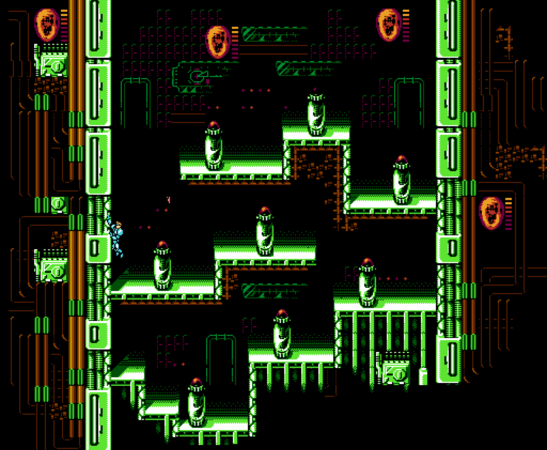
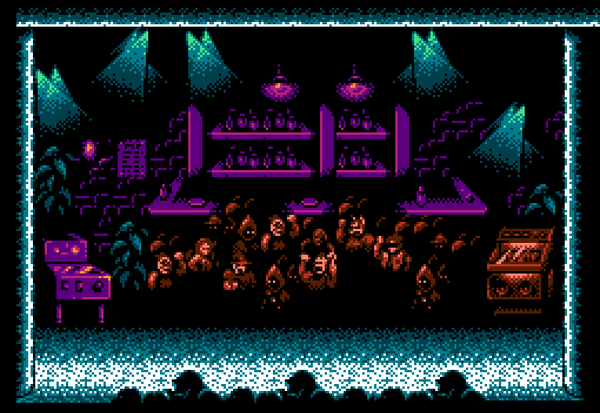
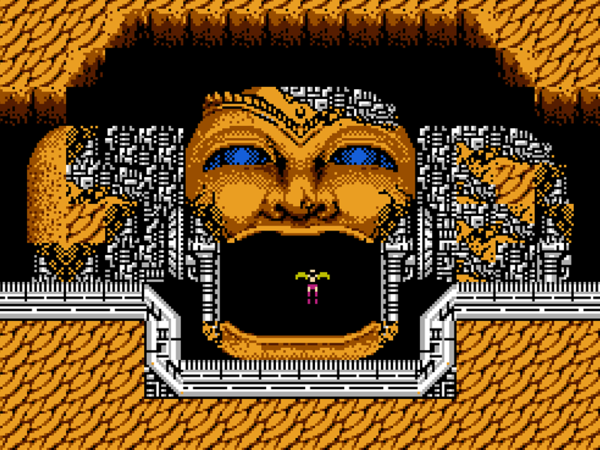
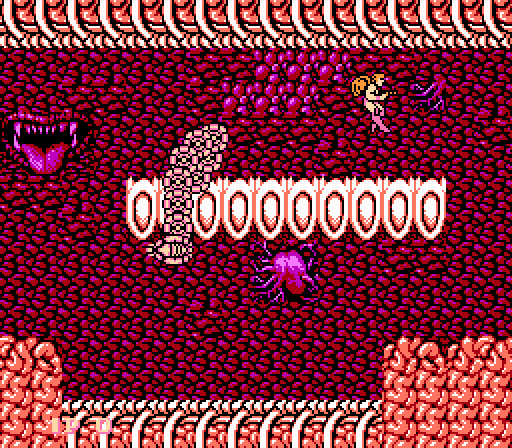
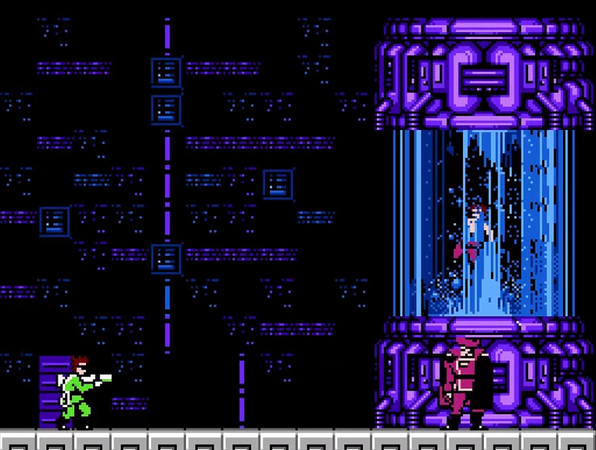
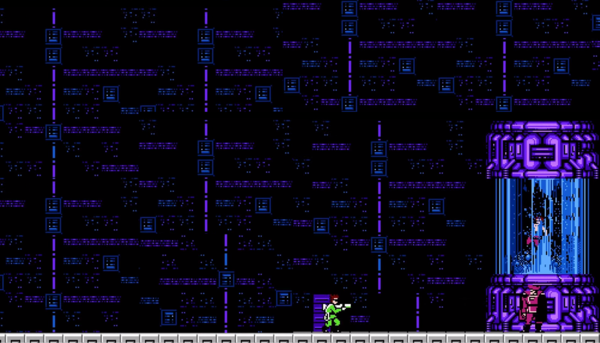
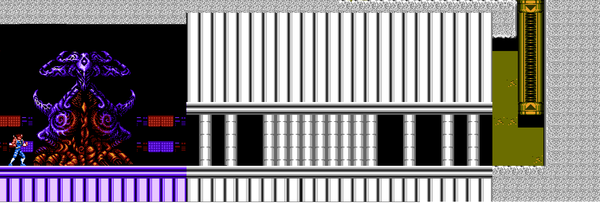
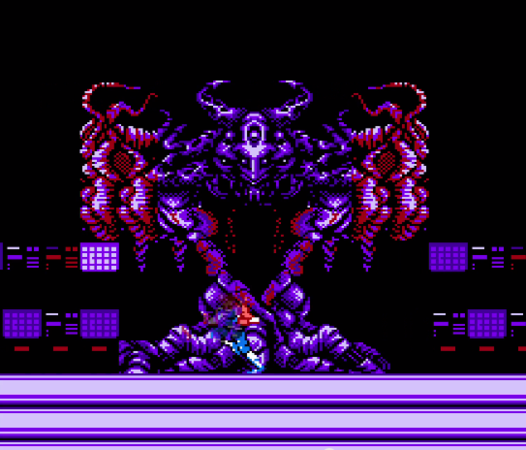





-
Brands:Tags:
-

Loading...
Platforms:
